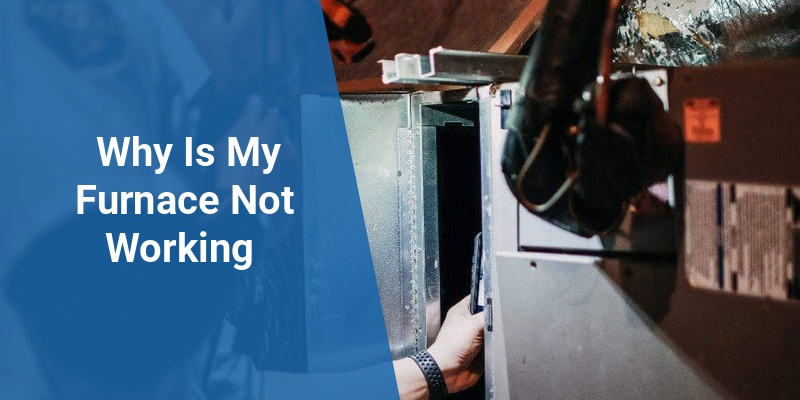When winter temperatures drop, a malfunctioning furnace can quickly become a major concern. Understanding why a furnace is not working helps homeowners address issues promptly and maintain a warm home environment. This article examines the common causes of furnace failure, diagnostics, and practical troubleshooting tips for American households.
| Issue | Possible Cause | Suggested Solution |
|---|---|---|
| Furnace Not Turning On | Thermostat settings, power supply, or pilot light | Check thermostat, reset power, relight pilot or contact technician |
| Furnace Turns On But No Heat | Dirty filters, malfunctioning burners, or gas supply problems | Replace filters, clean burners, inspect gas line |
| Furnace Cycles On and Off | Overheating, clogged filters, or faulty blower | Clean filters, clean blower, inspect safety switch |
| Strange Noises from Furnace | Loose components, motor issues, or airflow restrictions | Tighten parts, lubricate motor, remove obstructions |
Common Reasons Why Furnaces Stop Working
Furnace failures are frequently rooted in mechanical, electrical, or fuel supply issues. Identifying these can prevent extended downtime and costly repairs. The most common causes include thermostat malfunctions, dirty air filters, pilot light issues, and electrical problems. Environmental factors like dirty vents or blocked chimneys also contribute by hindering proper airflow.
Thermostat Problems and Furnace Operation
The thermostat controls when the furnace turns on or off based on the temperature settings. If the thermostat is faulty or incorrectly set, the furnace may not activate. Dead batteries, loose wiring, or wrong temperature settings often cause problems. Verifying thermostat functionality and proper settings is a critical first step in furnace troubleshooting.
Electrical Issues Affecting Furnace Function
Power outages, tripped circuit breakers, or blown fuses can disrupt furnace operation. The furnace requires consistent electrical power to ignite and run its blower. Inspecting the electrical panel and confirming power supply integrity ensures that power-related failures are addressed swiftly. Faulty wiring inside the furnace may also pose risks and require professional evaluation.
Pilot Light and Ignition Malfunctions
Older furnaces rely on pilot lights to ignite the burners. If the pilot light goes out or the electronic ignition fails, the furnace will not produce heat. Causes include drafts, dirt buildup, or gas supply interruptions. Modern furnaces typically use electronic ignitors, but these components can fail as well, necessitating inspection or replacement.
Dirty or Clogged Air Filters and Furnace Efficiency
Air filters prevent dust and debris from entering the furnace system. When filters become clogged, airflow is restricted, and the furnace may overheat or shut down as a safety precaution. Regular replacement of filters (approximately every 1-3 months) is vital for optimal furnace performance.
Issues with Gas Supply or Ventilation
Since many American homes use gas-powered furnaces, a disrupted or inadequate gas supply can cause the furnace to stop working. Likewise, blocked or damaged vents can prevent exhaust gases from escaping, resulting in safety hazards and system shutdowns. Monitoring gas connections and vent systems ensures furnace reliability and safety compliance.
Call 888-906-9139 for Free Local HVAC Quotes – No Obligation, Just Savings!
Mechanical Problems Within the Furnace
Components such as the blower motor, burners, and belts are subject to normal wear and tear. Faulty motors, broken belts, or malfunctioning burners can cause noise, overheating, or failure to heat. Regular furnace maintenance including lubrication, belt inspection, and burner cleaning can prevent these mechanical issues from escalating.
Troubleshooting Steps for Homeowners
- Check Thermostat Settings: Ensure the thermostat is on heat mode and set above room temperature.
- Inspect Air Filters: Clean or replace dirty filters to improve airflow and reduce overheating risks.
- Verify Power Supply: Reset circuit breakers and replace furnace batteries if applicable.
- Relight Pilot Light: For older models, follow manufacturer instructions to safely relight the pilot.
- Examine Vents and Flues: Ensure no blockages restrict exhaust or airflow.
- Listen for Strange Noises: Identify unusual sounds that may indicate mechanical problems.
When to Contact a Professional HVAC Technician
While many minor furnace issues can be handled by homeowners, complex problems such as gas leaks, electrical faults, or persistent mechanical failures require professional attention. Scheduling annual furnace maintenance with a licensed HVAC technician enhances safety and efficiency. Professionals can also perform detailed diagnostics to prevent emergencies and expensive repairs.
Energy Efficiency and Furnace Performance
An improperly functioning furnace can lead to increased energy consumption and higher utility bills. Maintaining furnace efficiency through regular filter changes, professional tune-ups, and timely repairs maximizes heat output while minimizing energy costs. Investing in modern programmable thermostats and high-efficiency furnace models further optimizes home heating.
Furnace Safety Considerations
Gas furnaces emit carbon monoxide, which is dangerous if ventilation is insufficient. Install carbon monoxide detectors near furnaces and living areas to ensure early warning of leaks. Never ignore odor or soot buildup around the furnace, and have these concerns inspected immediately to prevent health risks.
